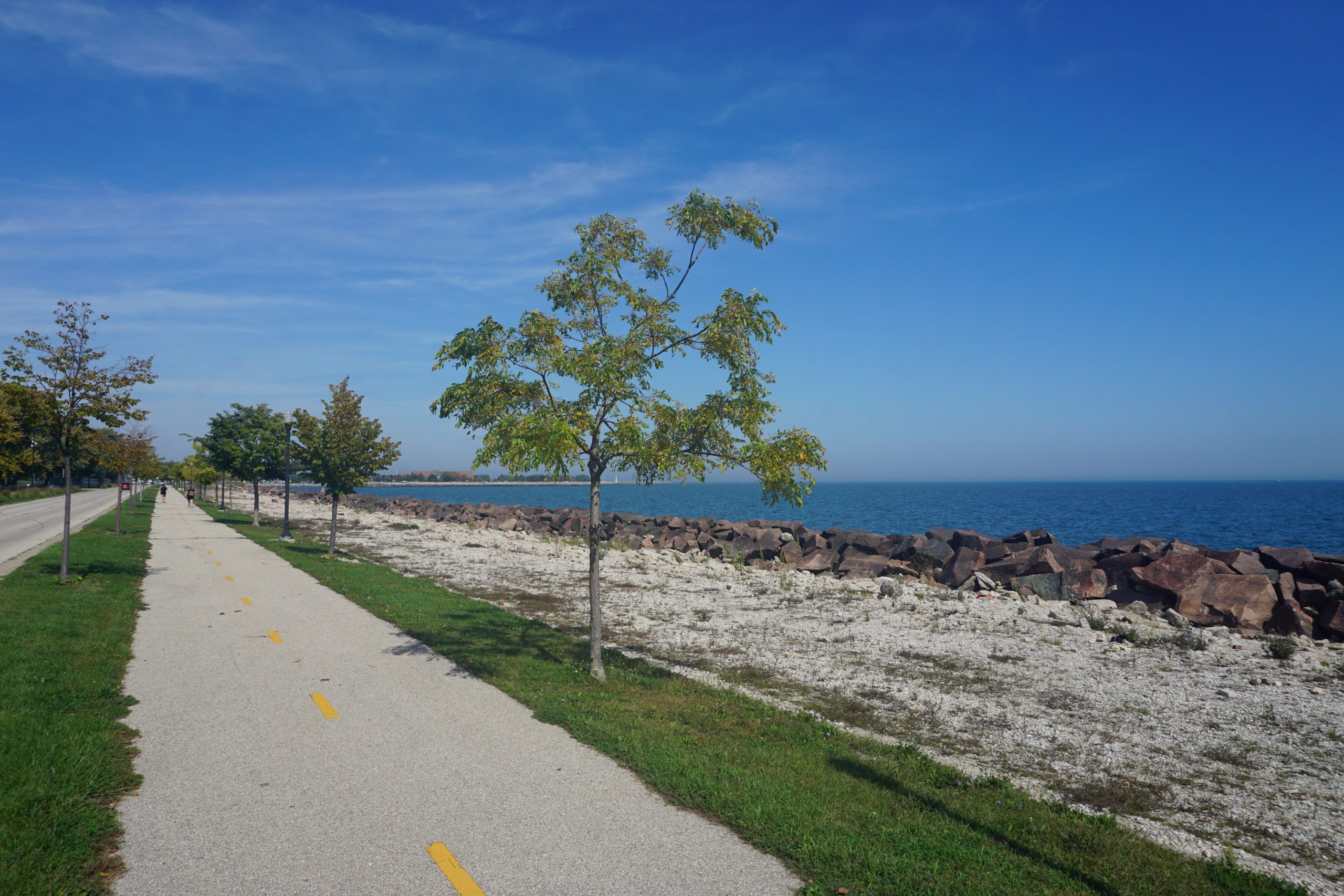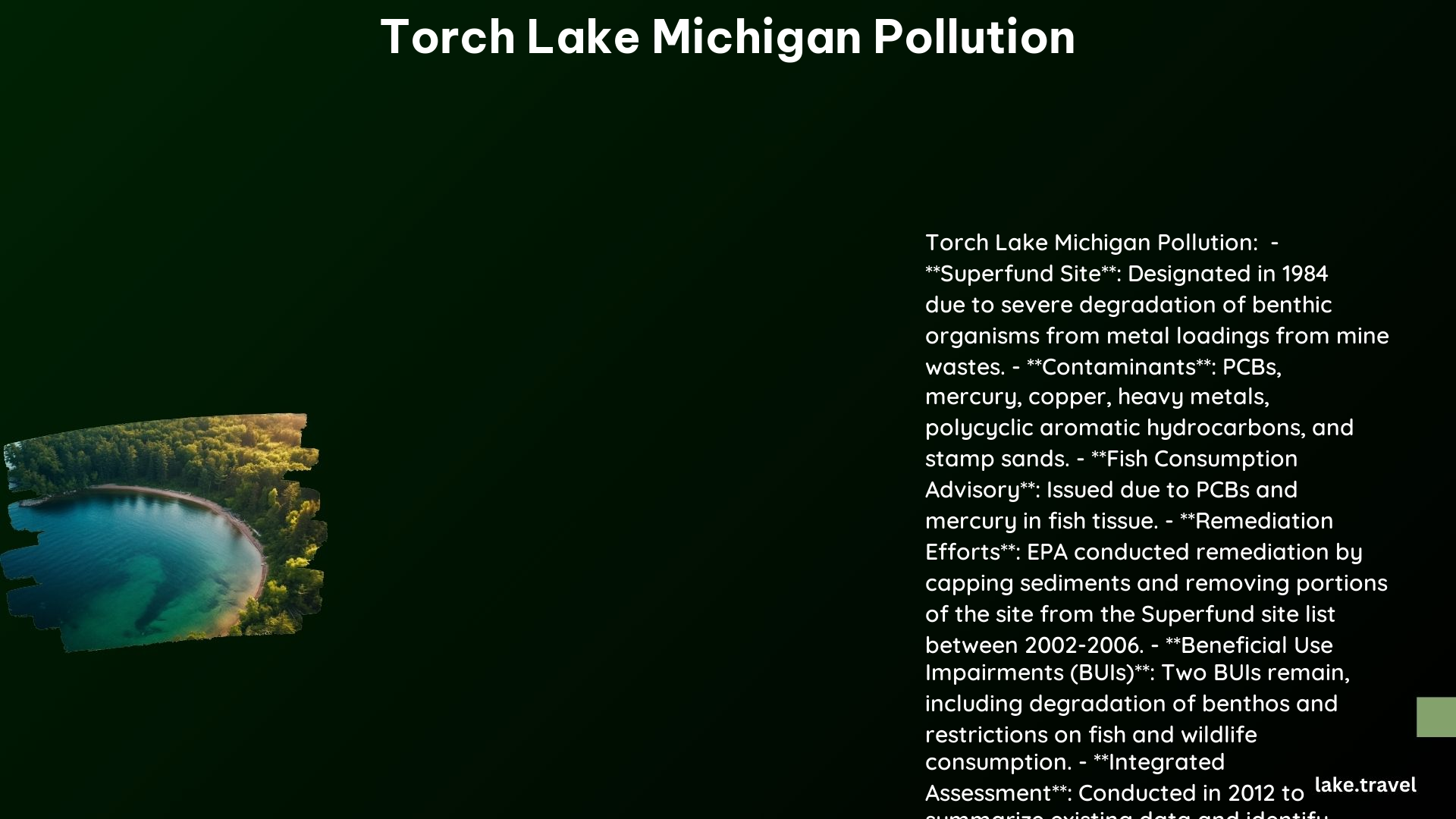Torch Lake in Michigan is a prime example of the devastating consequences of unchecked environmental pollution. For over a century, the lake has been the victim of extensive copper mining and processing activities, leading to the accumulation of harmful contaminants that continue to threaten the delicate ecosystem and the health of the surrounding communities.
Main Sources of Pollution

Copper Mining and Processing
The primary source of pollution in Torch Lake is the waste generated from the copper mining and processing industry that operated in the region from 1845 to 1968. The mining activities resulted in the discharge of large amounts of stamp sands, chemicals, and heavy metals like copper, lead, and arsenic into the lake. At one point, these stamp sands had filled up to 50% of the lake’s volume, drastically altering its natural state.
Additionally, the process wastes from the smelters were quenched with lake waters, further contaminating the lake and the surrounding areas.
Heavy Metals and PCBs
Torch Lake is now heavily contaminated with a variety of pollutants, including heavy metals like copper, lead, and arsenic, as well as polycyclic aromatic hydrocarbons (PAHs) and polychlorinated biphenyls (PCBs). These contaminants have been linked to significant health risks for both humans and wildlife, including the degradation of benthic organisms and the issuance of fish consumption advisories.
Current Efforts for Remediation and Restoration

Integrated Assessment
In an effort to address the environmental issues plaguing Torch Lake, an integrated assessment project was conducted by Michigan Sea Grant. This project aimed to summarize the existing data and identify feasible solutions for the site. The assessment involved gathering data, evaluating information, and working closely with stakeholders to develop approaches for reinvigorating the restoration process.
Remediation Projects
The U.S. Environmental Protection Agency (EPA) has been collaborating with federal, state, and local partners to implement various remediation and restoration projects in Torch Lake. These include the Torch Lake Great Lakes Legacy Act Focused Feasibility Study and the Torch Lake Degradation of Benthos BUI pilot study project. These initiatives are focused on addressing the contaminated sediment, mining waste, and habitat restoration to improve the overall environmental health of the lake.
Partnerships and Collaborations
The restoration efforts for Torch Lake involve the participation of several organizations, including the Michigan Department of Environment, Great Lakes, and Energy, Michigan Sea Grant, and the Torch Lake Public Advisory Council. These entities are working together to coordinate and execute the necessary actions to address the pollution and revitalize the lake’s ecosystem.
Specific Contaminants and Their Impacts
PCBs and Mercury
The presence of PCBs and mercury in the fish tissue of Torch Lake has led to the issuance of fish consumption advisories. This poses significant health risks to individuals who consume the contaminated fish, as these pollutants can have detrimental effects on human health.
Copper and Other Heavy Metals
The high concentrations of copper and other heavy metals in Torch Lake have severely degraded the benthic ecosystem, causing significant environmental harm. The contamination of the lake’s sediments and waters has had a cascading effect on the entire food chain, impacting the overall health and biodiversity of the aquatic life.
Timeline and Progress
- 1984: Torch Lake was designated as a Superfund site and included on the list of Areas of Concern (AOCs) under the U.S.-Canada Great Lakes Water Quality Agreement.
- 2002-2006: The EPA conducted remediation by capping sediments and removed portions of the site from the Superfund site list.
- 2012: Michigan Sea Grant funded an integrated assessment project to evaluate the site and identify solutions.
- 2019: The EPA signed a Great Lakes Legacy Act Project Agreement with Honeywell International, Inc. to perform a focused feasibility study at the Torch Lake AOC.
- 2021-2023: Monitoring and construction of pilot-scale shoreline capping and habitat restoration test plots took place as part of the Torch Lake Degradation of Benthos BUI pilot study project.
Contact Information
For more information or to report any concerns related to Torch Lake, you can contact the following:
- Michigan Department of Health and Human Services: 1-800-648-6942 or visit www.michigan.gov/mdch-toxics.
- EPA: Heather Williams, 312-886-5993, Williams.Heather@epa.gov.
References
- Michigan Sea Grant. (n.d.). Torch Lake Area of Concern IA. Retrieved from https://www.michiganseagrant.org/topics/restoration/torch-lake-area-of-concern-ia/
- Eggleston, S. (2016, March 24). Torch Lake is a cautionary tale of what happens when pollution goes unchecked. Second Wave – Michigan. Retrieved from https://www.secondwavemedia.com/upword/features/torchlakeaoc32416.aspx
- Michigan Department of Health and Human Services. (2013, April 15). Torch Lake Superfund Site and Surrounding Areas. Retrieved from https://www.michigan.gov/-/media/Project/Websites/mdhhs/Folder2/Folder83/Folder1/Folder183/Torch_Lake_exposure_during_outdoor_activities_fact_sheet_4-15-2013.pdf?rev=cdf24db0736b407e89e8e291a753e6f6
- United States Environmental Protection Agency. (n.d.). Torch Lake AOC. Retrieved from https://www.epa.gov/great-lakes-aocs/torch-lake-aoc
- United States Environmental Protection Agency. (n.d.). TORCH LAKE | Superfund Site Profile. Retrieved from https://cumulis.epa.gov/supercpad/SiteProfiles/index.cfm?fuseaction=second.Healthenv&id=0503034
